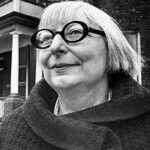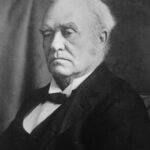 Abbott, Sir John Joseph Caldwell - Sir John Joseph Caldwell Abbott - 3rd Prime Minister of Canada 3rd Prime Minister of Canada Date of Birth: 12-Mar-1821St. Andrews, Lower Canada Date of Death: 30-Oct-1893Montréal, Québec Cemetery: Mount Royal Cemetery Date of Birth 1900-03-12 Place of birth :St. Andrews,… Continue Reading
Abbott, Sir John Joseph Caldwell - Sir John Joseph Caldwell Abbott - 3rd Prime Minister of Canada 3rd Prime Minister of Canada Date of Birth: 12-Mar-1821St. Andrews, Lower Canada Date of Death: 30-Oct-1893Montréal, Québec Cemetery: Mount Royal Cemetery Date of Birth 1900-03-12 Place of birth :St. Andrews,… Continue Reading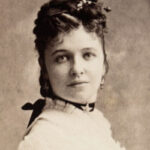 Albani, Emma - Date of Birth 1847-11-01 Place of birth: Chambly, Quebec Date of Death 1930-04-03 Place of death: London, England. Brompton Cemetery, London UK Also known as Marie-Louise-Emma-Cécile Lajeunesse Dame Emma Albani was a leading soprano of the 19th century and early 20th… Continue Reading
Albani, Emma - Date of Birth 1847-11-01 Place of birth: Chambly, Quebec Date of Death 1930-04-03 Place of death: London, England. Brompton Cemetery, London UK Also known as Marie-Louise-Emma-Cécile Lajeunesse Dame Emma Albani was a leading soprano of the 19th century and early 20th… Continue Reading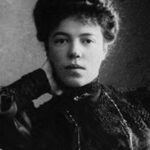 Alexandrovna, Olga Romanov - Date of Birth 1882-06-13 Date of Death 1960-11-24 Also known as Her Imperial Highness Grand Duchess Olga Romanov Grand Duchess Olga was the was the youngest child of Emperor Alexander III of Russia and sister of murdered Russian Tsar Nicholas II.… Continue Reading
Alexandrovna, Olga Romanov - Date of Birth 1882-06-13 Date of Death 1960-11-24 Also known as Her Imperial Highness Grand Duchess Olga Romanov Grand Duchess Olga was the was the youngest child of Emperor Alexander III of Russia and sister of murdered Russian Tsar Nicholas II.… Continue Reading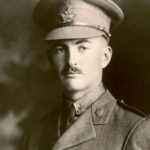 Algie, Wallace Lloyd VC - Wallace Lloyd Algie Date of Birth 1891-06-10 Place of birth: Alton (Caledon), Ontario Date of Death 1918-10-11 Place of death: Cambrai, France VC Citation: For most conspicuous bravery and self-sacrifice on the 11th October, 1918, north-east of Cambrai, when with attacking… Continue Reading
Algie, Wallace Lloyd VC - Wallace Lloyd Algie Date of Birth 1891-06-10 Place of birth: Alton (Caledon), Ontario Date of Death 1918-10-11 Place of death: Cambrai, France VC Citation: For most conspicuous bravery and self-sacrifice on the 11th October, 1918, north-east of Cambrai, when with attacking… Continue Reading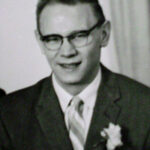 Andrews, George Henry - Born: March 24th, 1928, Toronto, Ontario. Died: January 22nd, 1982, Toronto Ontario. Buried: St. John's Norway Cemetery, Toronto Ontario January 26th 1982 Continue Reading
Andrews, George Henry - Born: March 24th, 1928, Toronto, Ontario. Died: January 22nd, 1982, Toronto Ontario. Buried: St. John's Norway Cemetery, Toronto Ontario January 26th 1982 Continue Reading Apps, Sylvanus “Syl” - Date of Birth 1915-01-18 Place of birth: Paris, Ontario Date of Death 1998-12-24 Place of death: Kingston, Ontario Cemetery: Mountview Cemetery. Exact location in cemetery is unknown Also known as Charles Joseph Sylvanus Apps and Syl Apps Sr. Syl Apps won… Continue Reading
Apps, Sylvanus “Syl” - Date of Birth 1915-01-18 Place of birth: Paris, Ontario Date of Death 1998-12-24 Place of death: Kingston, Ontario Cemetery: Mountview Cemetery. Exact location in cemetery is unknown Also known as Charles Joseph Sylvanus Apps and Syl Apps Sr. Syl Apps won… Continue Reading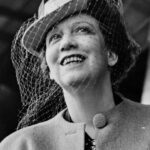 Arden, Elizabeth - Date of Birth 1884-12-31 Place of birth: Woodbridge, Ontario Date of Death1966-10-18 Place of death: New York City, New York Also known as Florence Nightingale Graham (at birth) Florence Nightingale Graham, who went by the business name Elizabeth Arden, was a… Continue Reading
Arden, Elizabeth - Date of Birth 1884-12-31 Place of birth: Woodbridge, Ontario Date of Death1966-10-18 Place of death: New York City, New York Also known as Florence Nightingale Graham (at birth) Florence Nightingale Graham, who went by the business name Elizabeth Arden, was a… Continue Reading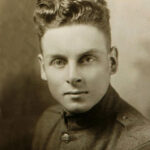 Babcock, John - Date of Birth 1900-07-23, Frontenac County, Ontario Date of Death 2010-02-18, Spokane, Washington Also known as John Henry Foster Babcock, Jack Babcock John Babcock was the last known surviving veteran of the Canadian military to have served in the First World… Continue Reading
Babcock, John - Date of Birth 1900-07-23, Frontenac County, Ontario Date of Death 2010-02-18, Spokane, Washington Also known as John Henry Foster Babcock, Jack Babcock John Babcock was the last known surviving veteran of the Canadian military to have served in the First World… Continue Reading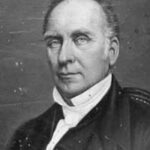 Baldwin, Robert - Date of Birth1804-05-12Place of birth:York (now Toronto), Upper Canada (now Ontario)Date of Death1858-12-09Place of death:at his home "Spadina", Yorkville (Toronto), Ontario (Canada West) Robert Baldwin along with his political partner Louis-Hippolyte Lafontaine, led the first responsible ministry in Canada, regarded by… Continue Reading
Baldwin, Robert - Date of Birth1804-05-12Place of birth:York (now Toronto), Upper Canada (now Ontario)Date of Death1858-12-09Place of death:at his home "Spadina", Yorkville (Toronto), Ontario (Canada West) Robert Baldwin along with his political partner Louis-Hippolyte Lafontaine, led the first responsible ministry in Canada, regarded by… Continue Reading Ballard, Harold - Date of Birth 1903-07-30 Place of birth: Toronto, Ontario Date of Death1990-04-11 Place of death: Toronto, Ontario Also known as Edwin Harold Ballard (at birth)Harold E. Ballard Harold Ballard was the owner of the Toronto Maple Leafs and Hamilton Tiger Cats.… Continue Reading
Ballard, Harold - Date of Birth 1903-07-30 Place of birth: Toronto, Ontario Date of Death1990-04-11 Place of death: Toronto, Ontario Also known as Edwin Harold Ballard (at birth)Harold E. Ballard Harold Ballard was the owner of the Toronto Maple Leafs and Hamilton Tiger Cats.… Continue Reading Banting, Frederick - Date of Birth 1891-11-14 Place of birth: Alliston, Ontario Date of Death 1941-02-21 Place of death: near Musgrave Harbour, Newfoundland Cause of death: Airplane crash Also known as Sir Frederick Grant Banting Frederick Banting was the discoverer of insulin and winner… Continue Reading
Banting, Frederick - Date of Birth 1891-11-14 Place of birth: Alliston, Ontario Date of Death 1941-02-21 Place of death: near Musgrave Harbour, Newfoundland Cause of death: Airplane crash Also known as Sir Frederick Grant Banting Frederick Banting was the discoverer of insulin and winner… Continue Reading Barilko, Bill - Date of Birth 1927-03-25 Place of birth: Timmins, OntarioDate of Death 1951-08-26 Place of death: near Cochrane, OntarioAlso known as William Barilko, "Bashin' Bill" Barilko Bill Barilko scored the overtime goal in game 5 of the 1950-51 Stanley Cup playoffs to… Continue Reading
Barilko, Bill - Date of Birth 1927-03-25 Place of birth: Timmins, OntarioDate of Death 1951-08-26 Place of death: near Cochrane, OntarioAlso known as William Barilko, "Bashin' Bill" Barilko Bill Barilko scored the overtime goal in game 5 of the 1950-51 Stanley Cup playoffs to… Continue Reading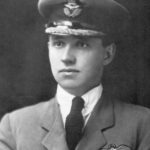 Barker, William George, VC - Date of Birth 1894-11-03 Place of birth: Dauphin, Manitoba Date of Death 1930-03-12 Place of death: Rockcliffe Aerodrome, Ottawa, Ontario Cause of death: flying accident Also known as Billy Barker William George Barker VC, DSO & Bar, MC & Two Bars… Continue Reading
Barker, William George, VC - Date of Birth 1894-11-03 Place of birth: Dauphin, Manitoba Date of Death 1930-03-12 Place of death: Rockcliffe Aerodrome, Ottawa, Ontario Cause of death: flying accident Also known as Billy Barker William George Barker VC, DSO & Bar, MC & Two Bars… Continue Reading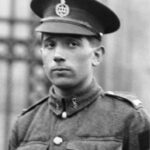 Barron, Colin Fraser, VC - Colin Fraser Barron VC (20 September 1893 – 15 August 1958) was a Canadian recipient of the Victoria Cross, the highest and most prestigious award for gallantry in the face of the enemy that can be awarded to British and Commonwealth… Continue Reading
Barron, Colin Fraser, VC - Colin Fraser Barron VC (20 September 1893 – 15 August 1958) was a Canadian recipient of the Victoria Cross, the highest and most prestigious award for gallantry in the face of the enemy that can be awarded to British and Commonwealth… Continue Reading Bay, Frances - Date of Birth 1919-01-23 Place of birth: Mannville, Alberta Date of Death 2011-09-15 Place of death: Tarzana, California, U.S. Cause of death: complications from pneumonia Also known as Frances Goffman Frances Bay was an actress primarily known for her character roles… Continue Reading
Bay, Frances - Date of Birth 1919-01-23 Place of birth: Mannville, Alberta Date of Death 2011-09-15 Place of death: Tarzana, California, U.S. Cause of death: complications from pneumonia Also known as Frances Goffman Frances Bay was an actress primarily known for her character roles… Continue Reading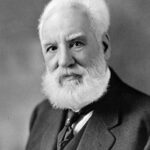 Bell, Alexander Graham - Date of Birth 1847-03-03 Place of birth: Edinburgh, Scotland Date of Death1922-08-02Place of death: Beinn Bhreagh, Nova Scotia Also known as Aleck Bell Alexander Graham Bell was an eminent scientist, inventor, engineer and innovator who is credited with inventing the first… Continue Reading
Bell, Alexander Graham - Date of Birth 1847-03-03 Place of birth: Edinburgh, Scotland Date of Death1922-08-02Place of death: Beinn Bhreagh, Nova Scotia Also known as Aleck Bell Alexander Graham Bell was an eminent scientist, inventor, engineer and innovator who is credited with inventing the first… Continue ReadingBennett, Richard Bedford - aka R.B. Bennett R.B. Bennett served as the 11th Prime Minister of Canada during the worst of the Great Depression years. Following his defeat as prime minister, Bennett moved to England, and was elevated to the House of Lords.";" June 12,… Continue Reading
 Best, Charles H. - Date of Birth1899-02-27, West Pembroke, Washington County, Maine Date of Death1978-03-31, Toronto, Ontario Also known as Charles Herbert Best Charles Best was a medical scientist and one of the co-discoverers of insulin. Dr. Charles Best and Dr. Frederick Banting discovered insulin. Continue Reading
Best, Charles H. - Date of Birth1899-02-27, West Pembroke, Washington County, Maine Date of Death1978-03-31, Toronto, Ontario Also known as Charles Herbert Best Charles Best was a medical scientist and one of the co-discoverers of insulin. Dr. Charles Best and Dr. Frederick Banting discovered insulin. Continue Reading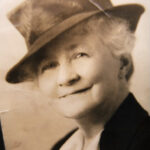 Black, Martha Louise - Date of Birth1900-02-24 Date of Death1957-10-31 I have a suggestion for another person for your site. Her name was Martha Louise Black. She was the second woman elected to the Parliament. However that is just one part of her fascinating story:… Continue Reading
Black, Martha Louise - Date of Birth1900-02-24 Date of Death1957-10-31 I have a suggestion for another person for your site. Her name was Martha Louise Black. She was the second woman elected to the Parliament. However that is just one part of her fascinating story:… Continue Reading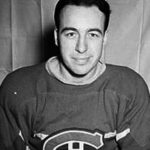 Blake, Hector “Toe” - Date of Birth1912-08-21Place of birth: Victoria Mines, Ontario Date of Death 1995-05-17 Place of death: Montreal, Quebec Cause of death: pneumonia as a complication of Alzheimer's Disease Also known as Hector Blake, Old Lamplighter Toe Blake was a hockey player and… Continue Reading
Blake, Hector “Toe” - Date of Birth1912-08-21Place of birth: Victoria Mines, Ontario Date of Death 1995-05-17 Place of death: Montreal, Quebec Cause of death: pneumonia as a complication of Alzheimer's Disease Also known as Hector Blake, Old Lamplighter Toe Blake was a hockey player and… Continue Reading Bombardier, Joseph-Armand - Date of Birth 1907-04-16 Valcourt, QC Date of Death 1964-02-18 Sherbrooke, QC Joseph-Armand Bombardier, engineer, entrepreneur, inventor of the snowmobile and Ski-Doo (born 16 April 1907 in Valcourt, QC; died 18 February 1964 in Sherbrooke, QC). While Bombardier’s many inventions demonstrate… Continue Reading
Bombardier, Joseph-Armand - Date of Birth 1907-04-16 Valcourt, QC Date of Death 1964-02-18 Sherbrooke, QC Joseph-Armand Bombardier, engineer, entrepreneur, inventor of the snowmobile and Ski-Doo (born 16 April 1907 in Valcourt, QC; died 18 February 1964 in Sherbrooke, QC). While Bombardier’s many inventions demonstrate… Continue Reading Boogaard, Derek - Date of Birth1982-06-23 Place of birth: Saskatoon, Saskatchewan Date of Death 2011-05-13 Place of death: Minneapolis, Minnesota Cause of death: accidental drug overdose (mixture of prescription pain medication and alcohol) Also known as BoogeymanThe Mountie Derek Boogaard was an NHL hockey… Continue Reading
Boogaard, Derek - Date of Birth1982-06-23 Place of birth: Saskatoon, Saskatchewan Date of Death 2011-05-13 Place of death: Minneapolis, Minnesota Cause of death: accidental drug overdose (mixture of prescription pain medication and alcohol) Also known as BoogeymanThe Mountie Derek Boogaard was an NHL hockey… Continue Reading Booth, Billy Joe - Dorchester Ontario - Billy Joe Booth killed in an aircraft explosion; nine year defensive linesman with Ottawa Rough Riders. https://www.cflapedia.com/Players/b/booth_billy_joe.htm Continue Reading
Booth, Billy Joe - Dorchester Ontario - Billy Joe Booth killed in an aircraft explosion; nine year defensive linesman with Ottawa Rough Riders. https://www.cflapedia.com/Players/b/booth_billy_joe.htm Continue Reading Bourgeoys, Marguerite - Date of Birth1620-04-16 Date of Death1700-01-20 Saint Marguerite Bourgeoys, was the founder of the Congregation of Notre Dame of Montreal in the colony of New France, now part of Québec. She lived in Fort Ville-Marie (now Montreal) as of 1653, educating… Continue Reading
Bourgeoys, Marguerite - Date of Birth1620-04-16 Date of Death1700-01-20 Saint Marguerite Bourgeoys, was the founder of the Congregation of Notre Dame of Montreal in the colony of New France, now part of Québec. She lived in Fort Ville-Marie (now Montreal) as of 1653, educating… Continue ReadingBreakey, Norman James - February 25, 1891; Died November 19, 1965 Norman Breakey was the inventor of the paint roller. He never reaped the financial benefits of his invention. British patent 1946: http://www.careerchem.com/NAMED/Patents/GB613188A.pdf Breakey's birth location is somewhat confused. His military attestation papers clearly show… Continue Reading
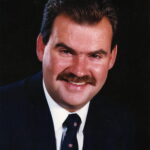 Burns, Pat - Date of Birth 1952-04-04 St.-Henri, Montreal, Quebec Date of Death 2010-11-19 Maison Aube-Lumière, Sherbrooke, Quebec Cause of death: colon cancer which eventually spread to his lungs Also known as Patrick Burns Pat Burns was an NHL coach from 1988 until 2004.… Continue Reading
Burns, Pat - Date of Birth 1952-04-04 St.-Henri, Montreal, Quebec Date of Death 2010-11-19 Maison Aube-Lumière, Sherbrooke, Quebec Cause of death: colon cancer which eventually spread to his lungs Also known as Patrick Burns Pat Burns was an NHL coach from 1988 until 2004.… Continue ReadingBurr, Raymond - Although Raymond Burr appeared in more than 60 movies, he is known primarily for his role in Perry Mason and Ironside. He won 2 Emmy Awards for his role as Perry Mason. Born May 21, 1917. Died September 12, 1993 Continue Reading
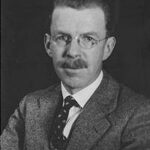 Carmichael, Franklin - Date of Birth 1890-05-04, Orillia, Ontario Date of Death 1945-10-24, Toronto, Ontario Cemetery: Saint Andrews and Saint James Cemetery, Orillia, Ontario. Block J Cause of death: pancreatic cancer Franklin Carmichael was a member of the Group of Seven. He was primarily… Continue Reading
Carmichael, Franklin - Date of Birth 1890-05-04, Orillia, Ontario Date of Death 1945-10-24, Toronto, Ontario Cemetery: Saint Andrews and Saint James Cemetery, Orillia, Ontario. Block J Cause of death: pancreatic cancer Franklin Carmichael was a member of the Group of Seven. He was primarily… Continue Reading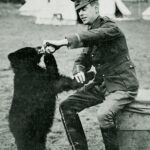 Colebourn, Harry - Date of Birth 1887-04-12 Birmingham, Warwickshire, England Date of Death 1947-09-24 Winnipeg, Manitoba Harry Colebourn was a Canadian veterinarian who is best known for donating his bear cub named "Winnie" (short for "Winnipeg") to the London Zoo. Winnie was the inspiration… Continue Reading
Colebourn, Harry - Date of Birth 1887-04-12 Birmingham, Warwickshire, England Date of Death 1947-09-24 Winnipeg, Manitoba Harry Colebourn was a Canadian veterinarian who is best known for donating his bear cub named "Winnie" (short for "Winnipeg") to the London Zoo. Winnie was the inspiration… Continue Reading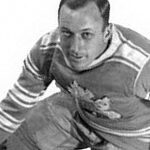 Conacher, Charles William Sr. - Date of Birth1909-12-20 Date of Death1967-12-30 Place of death: Toronto, Ontario Also known as The Big Bomber Charlie Conacher was a hockey star in the NHL in the 1930s. He led the league in scoring for 5 season and was named… Continue Reading
Conacher, Charles William Sr. - Date of Birth1909-12-20 Date of Death1967-12-30 Place of death: Toronto, Ontario Also known as The Big Bomber Charlie Conacher was a hockey star in the NHL in the 1930s. He led the league in scoring for 5 season and was named… Continue Reading Crombie, Jonathan - Date of Birth1966-10-12 Toronto, Ontario Date of Death2015-04-15 New York City, USA Cause of death: brain hemorrhage Jonathan Crombie (October 12, 1966 - April 15, 2015) was a Canadian actor. He was best known for playing Gilbert Blythe in CBC Television's… Continue Reading
Crombie, Jonathan - Date of Birth1966-10-12 Toronto, Ontario Date of Death2015-04-15 New York City, USA Cause of death: brain hemorrhage Jonathan Crombie (October 12, 1966 - April 15, 2015) was a Canadian actor. He was best known for playing Gilbert Blythe in CBC Television's… Continue Reading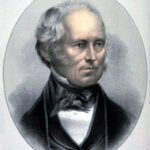 Cunard, Samuel - Sir Samuel Cunard was a shipping magnate who founded the Cunard Line of steam ships. Continue Reading
Cunard, Samuel - Sir Samuel Cunard was a shipping magnate who founded the Cunard Line of steam ships. Continue ReadingCutler, Wesley - Professional Football Player. A native of Toronto, Ontario, Cutler played for the University of Toronto Orfuns from 1931 to 1932, and the Toronto Argonauts from 1933 to 1938. Considered a great end, fine tackle, and a blocker of exceptional pass, he… Continue Reading
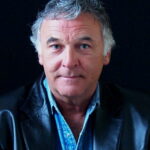 Danby, Ken - Date of Birth 1940-03-06 Place of birth: Sault Ste. Marie, Ontario Date of Death 2007-09-23 Place of death: North Tea Lake, Algonquin Park, Ontario Cause of death: heart attack Also known as Kenneth Edison Danby Ken Danby is recognized as one… Continue Reading
Danby, Ken - Date of Birth 1940-03-06 Place of birth: Sault Ste. Marie, Ontario Date of Death 2007-09-23 Place of death: North Tea Lake, Algonquin Park, Ontario Cause of death: heart attack Also known as Kenneth Edison Danby Ken Danby is recognized as one… Continue ReadingDesmond, Viola - Also known as: Viola Irene Davis Date of Birth: July 6, 1914 in Halifax Nova Scotia Date of Death: February 7, 1965 in New York, USA Viola Irene Desmond was a Canadian civil rights activist and businesswoman of Black Nova Scotian… Continue Reading
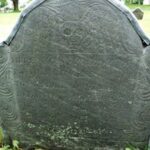 Duglass, Bathiah - Date of Death 1720-10-01 Place of death: Annapolis Royal, Nova Scotia Also known as Bathiah Douglass The oldest known headstone in Canada is that of Bathiah Duglass at the Garrison Cemetery at Annapolis Royal Nova Scotia. Headstone Inscription: HERE LYES Ye… Continue Reading
Duglass, Bathiah - Date of Death 1720-10-01 Place of death: Annapolis Royal, Nova Scotia Also known as Bathiah Douglass The oldest known headstone in Canada is that of Bathiah Duglass at the Garrison Cemetery at Annapolis Royal Nova Scotia. Headstone Inscription: HERE LYES Ye… Continue Reading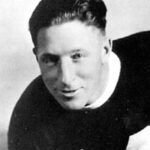 Dutton, Mervyn - Date of Birth 1898-07-23 Place of birth: Russell, Manitoba Date of Death1987-03-15 Place of death: Calgary, Alberta Also known as Norman Mervyn Alexander "Red" Dutton Merv "Red" Dutton "Red" Dutton was a hockey player and manager. Dutton served as the second… Continue Reading
Dutton, Mervyn - Date of Birth 1898-07-23 Place of birth: Russell, Manitoba Date of Death1987-03-15 Place of death: Calgary, Alberta Also known as Norman Mervyn Alexander "Red" Dutton Merv "Red" Dutton "Red" Dutton was a hockey player and manager. Dutton served as the second… Continue Reading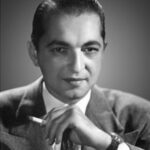 Faith, Percy - Percy Faith was a music producer, band-leader and pianist, Faith is best known for his composition, Theme From a Summer Place. Continue Reading
Faith, Percy - Percy Faith was a music producer, band-leader and pianist, Faith is best known for his composition, Theme From a Summer Place. Continue Reading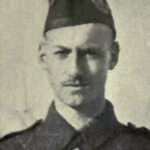 Fisher, Frederick - Lance-Corporal Frederick Fisher Born August 3 1895 in St. Catharines, Ontario Died April 23 1915, Ypres, Belgium First Canadian-born soldier to be awarded the prestigious Victoria Cross. Continue Reading
Fisher, Frederick - Lance-Corporal Frederick Fisher Born August 3 1895 in St. Catharines, Ontario Died April 23 1915, Ypres, Belgium First Canadian-born soldier to be awarded the prestigious Victoria Cross. Continue ReadingFleming, Sir Sandford - Born January 7, 1827, Kirkcaldy, ScotlandDied July 22, 1915, Halifax, Nova Scotia, Canada Sir Sandford Fleming was an engineer and inventor, known for proposing worldwide standard time zones, Canada's postage stamp, surveying and map making, engineering much of the Canadian Pacific… Continue Reading
Forbes, Jake Vivian - Vernor Vivian “Jumpin' Jackie” Forbes Legends of Hockey https://www.hhof.com/LegendsOfHockey/jsp/SearchPlayer.jsp?player=18512 NHL Official Statisticshttps://www.nhl.com/player/jake-forbes-8449918 Continue Reading
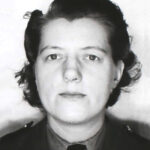 Fowler, Florence May, A/Sgt. - Sgt. Florence Fowler, CWAC. Born: November 20, 1916, North Bay, Ontario. Died: March 28, 1943, Baie-d'Urfé, Quebec. Interred Springcreek Cemetery, Mississauga Continue Reading
Fowler, Florence May, A/Sgt. - Sgt. Florence Fowler, CWAC. Born: November 20, 1916, North Bay, Ontario. Died: March 28, 1943, Baie-d'Urfé, Quebec. Interred Springcreek Cemetery, Mississauga Continue ReadingFrederick George Topham, VC - Frederick George Topham, VC was born in Toronto on 1917 and attended Runnymede High School. Serving in the 1st Canadian Parachute Battalion during WWII he earned the Victoria Cross at age 27 for his brave actions on March 24, 1945, east… Continue Reading
 Frum, Barbara - Date of Birth 1937-09-08 Place of birth: Niagara Falls, New York Date of Death 1992-03-26 Cause of death: leukemia Also known as Barbara Rosberg Claim to fame: Newscaster, journalist and TV Host. Interment Info Barbara Frum was originally interred at Pardes… Continue Reading
Frum, Barbara - Date of Birth 1937-09-08 Place of birth: Niagara Falls, New York Date of Death 1992-03-26 Cause of death: leukemia Also known as Barbara Rosberg Claim to fame: Newscaster, journalist and TV Host. Interment Info Barbara Frum was originally interred at Pardes… Continue Reading Geoffrion, Bernie “Boom Boom” - Date of Birth 1931-02-14 Place of birth: Montreal, Quebec Date of Death 2006-03-11 Place of death: Atlanta, Georgia Cause of death: stomach cancer Also known as Bernard Joseph Andre GeoffrionBoom Boom "Boom Boom" Geoffrion was born in Montreal, Quebec, and began… Continue Reading
Geoffrion, Bernie “Boom Boom” - Date of Birth 1931-02-14 Place of birth: Montreal, Quebec Date of Death 2006-03-11 Place of death: Atlanta, Georgia Cause of death: stomach cancer Also known as Bernard Joseph Andre GeoffrionBoom Boom "Boom Boom" Geoffrion was born in Montreal, Quebec, and began… Continue Reading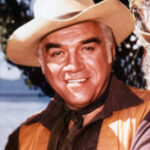 Greene, Lorne - Date of Birth 1915-02-12 Place of birth: Ottawa, Ontario Date of Death 1987-09-11 Continue Reading
Greene, Lorne - Date of Birth 1915-02-12 Place of birth: Ottawa, Ontario Date of Death 1987-09-11 Continue ReadingGuerin, Gertrude Klaw-law-we-leth - Also known as Gertrude Mary Elise Ettershank (née), Klaw-law-we-leth Born 26 March 1917 on the Mission Reserve on the north of the Fraser River, now part of North Vancouver. Died 25 January 1998 Cemetery: Musqueam reserve, Vancouver, BC https://www.thecanadianencyclopedia.ca/en/article/gertrude-guerin Continue Reading
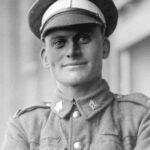 Hanna, Robert Hill, VC - CSM Hanna, VC Born: 6 August 1886, Kilkeel, County Down, Northern Ireland Died: 15 June 1967, Mount Lehman, British Columbia Also known as Company Sergeant-Major (CSM) Hanna, VC Lieut. Robert Hanna, VC Robert Hill Hanna moved to Canada in 1905. During… Continue Reading
Hanna, Robert Hill, VC - CSM Hanna, VC Born: 6 August 1886, Kilkeel, County Down, Northern Ireland Died: 15 June 1967, Mount Lehman, British Columbia Also known as Company Sergeant-Major (CSM) Hanna, VC Lieut. Robert Hanna, VC Robert Hill Hanna moved to Canada in 1905. During… Continue ReadingHarry C. Hatch – horse racing legacy - My visit earlier in the day to the Christie Methodist Cemetery in the parking lot of Bridlewood Mall inspired some research into the history of the area. Naturally the unusual name of the mall and surrounding Bridletown Circle, where we picked… Continue Reading
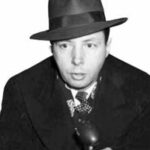 Hewitt, Foster - Foster Hewitt was a radio broadcaster most famous for his play-by-play calls for Hockey Night in Canada. He coined the phrase "He shoot! He scores!" Continue Reading
Hewitt, Foster - Foster Hewitt was a radio broadcaster most famous for his play-by-play calls for Hockey Night in Canada. He coined the phrase "He shoot! He scores!" Continue Reading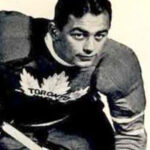 Hollett, William “Flash” - Claim to fame: Hockey player Birth: Apr. 13, 1911Death: Apr. 20, 1999 Interred: Springcreek Cemetery, Mississauga, Ontario. Professional Hockey Player. A native of North Sydney, Nova Scotia, he played the position of Defense for teams in the International Hockey League (IHL),… Continue Reading
Hollett, William “Flash” - Claim to fame: Hockey player Birth: Apr. 13, 1911Death: Apr. 20, 1999 Interred: Springcreek Cemetery, Mississauga, Ontario. Professional Hockey Player. A native of North Sydney, Nova Scotia, he played the position of Defense for teams in the International Hockey League (IHL),… Continue Reading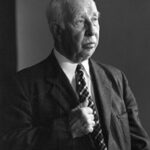 Jackson, A. Y. - A.Y. Jackson was a Canadian painter and founding member of the Group of Seven. Continue Reading
Jackson, A. Y. - A.Y. Jackson was a Canadian painter and founding member of the Group of Seven. Continue Reading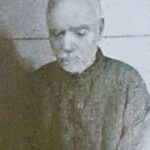 Jerome of Sandy Cove - erome (also spelled Jérôme) is the name given to an unidentifiable man discovered on the beach of Sandy Cove, Nova Scotia, on September 8, 1863. He was found with both legs cut off to stumps, and whe... Continue Reading
Jerome of Sandy Cove - erome (also spelled Jérôme) is the name given to an unidentifiable man discovered on the beach of Sandy Cove, Nova Scotia, on September 8, 1863. He was found with both legs cut off to stumps, and whe... Continue Reading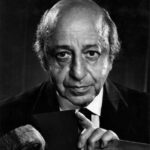 Karsh, Yousuf - Yousuf Karsh was one of the most famous and accomplished portrait photographers of all time. Continue Reading
Karsh, Yousuf - Yousuf Karsh was one of the most famous and accomplished portrait photographers of all time. Continue Reading
